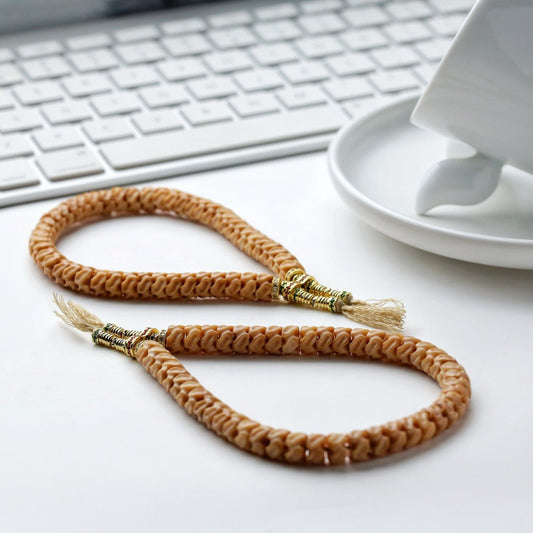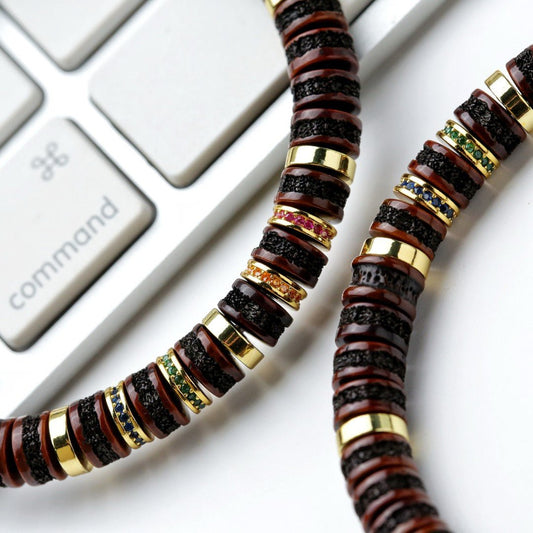
Within the intricate fabric among Tibetan sacred practices are present two celebrated items: the detailed thangka and symbolic bodhi ornament. All individually, in distinct form, function to connect with higher wisdom. The thangka, a colorful canvas, shows holy beings, mystical shapes, or doctrinal episodes, providing insight for inner reflection.
Yet, the bodhi bead, often crafted from semiprecious minerals, timber, kernels, or ossein, is a tangible reminder of Buddha's enlightenment under the bodhi tree. Using the beads while meditating strengthens attentiveness.
- As a pair, the thangka and the bodhi bead represent the journey towards enlightenment. They offer a tangible link to the ancient wisdom of Tibetan Buddhism.
Camel Bone Whispers
Over ancient epochs, timeless treasures whisper tales involving a world long elapsed. These are not luxurious objects crafted by shadowed empires, but unpretentious camel bones carved with glyphs that enclose the enigmas of a bygone period. Single shards carry the echo emanating from a life lived, a journey followed, and a connection to the old wisdom wherein envelops us all.
- It
- Tokens
- Provide
Understanding the Iconography of Thangka Creations
Tangkas are glowing paintings on canvas, meticulously crafted by Tibetan artists to depict holy figures and scenes from Buddhist texts. Each detail within a thangka is laden with importance, forming a complex tapestry of visual narratives that guide the viewer on a spiritual journey. The pigments used in thangkas are not merely aesthetic choices but carry powerful connotations, representing different aspects of the Buddhist ideology. From the solemn figures to the intricate layouts, thangkas offer a window into the rich world of Tibetan Buddhism, inviting us to meditate upon its knowledge.
- Time-honored thangka art often depicts key Buddhist figures such as Buddha Shakyamuni, Bodhisattvas like Avalokiteshvara and Manjushri, and enlightened beings from various lineages of Tibetan Buddhism.
- Across these representations lies a wealth of awareness that can be decoded by those who delve into the symbolic language of thangkas.
The Buddha's Path to Enlightenment: Embodied in Beads and Bone
Upon the winding road to salvation, the Buddha utilized emblems imbued with profound importance. The very bead and relic held within them the heart of his guidance, exhibiting glimpses into the matrix of reality. Using their configuration, the Buddha imparted profound discoveries that go beyond the realm of commonplace perception.
From these meditation beads, crafted from precious materials, flowed vibrations that matched with the vibrant waves within. The material of a creature, meticulously transformed into emblems, served as tangible signals of the impermanence innate to all entities.
Thangkas: Windows into Himalayan Spirituality
Thangkas luminous paintings on cloth serve as potent representations of Himalayan spirituality. These intricate works of art, meticulously created with finest brushstrokes, depict a vast array upon Buddhist deities, mandalas, and scenes from time-honored scriptures. Each thangka is an invaluable tool for meditation and contemplation, offering awareness into the complex teachings of Buddhism.
- They are often used in ritual ceremonies in the context of
- expressing states of spiritual insight.
- Thangkas present not merely decorative items but rather pathways into the rich and mesmerizing world of Himalayan spiritual traditions.
Walking with Bodhi Beads: Paths of Mindfulness and Compassion
Each bead on a bodhi bead mala whispers tales of ancient wisdom, guiding us on a passage through the tranquil waters of mindfulness. As we hold these intricately crafted beads, our fingers trace the contours of distinct one, anchoring our awareness in the present moment. The gentle substance of the beads against our palms serves as a tangible reminder to take in air, fostering a sense of serenity.
- With every bead that passes between our fingers, we foster compassion, extending it first to ourselves and then outward to the world.
- Ancient traditions teaches us that mindfulness is a practice that requires patience and steadfastness.
Utilizing the rhythmic repetition of mantra or simply the mindful counting of the beads, we break free from the relentless chatter of the mind.
The practice employing bodhi beads is a refined invitation to re-engage our connection with ourselves and the world around us.
Focused Energy: Producing Camel Bone Bracelets for Higher Awareness
Resolve forms a significant motivator in our lives, shaping our experiences and guiding us towards our spiritual goals. When we combine this intention with the ancestral experience of crafting a camel bone bracelet, we create a potent synergy that can accelerate our spiritual growth.Camel bone exudes mystical power, representing endurance. Its natural beauty and ancient magnetism serve as a constant reminder of the sacred potential within each of us.Through mindful selection of bones, instill intentions into the creation. With every knot or bind, we integrate our hopes, dreams, and aspirations for spiritual evolution. This act of creation becomes a meditative practice, merging us with our inner wisdom and guiding us on a voyage of awakening.- Match the bone’s tones to your aspirational themes.
- Picture your goals interlaced in the bracelet’s form.
- Bless the bracelet in ceremonies to infuse vitality.
Exploring Camel Bone as a Buddhist Symbol
In the rich tapestry embedded in Buddhist tradition, artifacts often hold profound symbolic meaning. Across these varied objects, camel bone stands out as a exceptional and engaging element. Throughout history, this material has been integrated in the crafting of various Buddhist implements, each imbued with specific meanings.
- Perceived as a symbol of resilience and strength due to the camel's ability to withstand in harsh environments, camel bone often signifies spiritual fortitude.
- Complementarily, the color and texture relative to camel bone are believed on some to hold auspicious connotations, expressing purity and serenity.
Thereupon, camel bone has become a esteemed part of Buddhist history, serving as a tangible bond to the profound teachings contained in this ancient faith.
Thangka Panels: Visual Sacred Lore
Within the ethereal realm of Tibetan Buddhism, Thangka paintings emerge as sacred portals to enlightenment. These magnificent works, meticulously crafted by skilled artists known as thangkapa, depict a myriad in an array of vibrant deities, celestial beings, and mythical creatures. Each brushstroke injects profound spiritual significance, narrating ancient tales and philosophical concepts.
- Encompassing a vast collection of Buddhist iconography, Thangkas serve as both devotional objects and instructional tools. Devout practitioners gaze upon these paintings during rituals and meditations, seeking to cultivate spiritual wisdom.
- Elaborately embellished with intricate details alongside a multitude of vibrant hues, Thangkas are considered windows into the divine. The painting acts as a symbolic representation of the Divine Figure's teachings and the path to liberation.
Using their dominant imagery and symbolism, Thangka paintings offer a glimpse into the rich devotional traditions of Tibet. They are a testament to the enduring elegance of Tibetan art and its profound ability to inspire.
Embracing the Duality: Thangkas and the Cycle of Life and Death
Thangkas, vividly decorated scrolls from Tibet, express a significant discourse on life’s evanescence. Each intricate portrait depicts deities and beings engaged in the persistent journey of life and death, a mosaic of birth, growth, impermanence, and renaissance. The artists skillfully intertwine these concepts within the thangka's environment, highlighting the cohesion of all things. Through vivid icons, they invite us to speculate on our own journey. The cycle returns, a sequence of coming and going, stressing the preciousness of each moment. By embracing this duality, thangkas teach us to cherish the beauty in both life's joys and sorrows.Lines of Commitment: The Significance of Bracelets in Buddhist Practice
In the intricate tapestry of Buddhist practice, seemingly minimalist objects often hold profound meaning. Among these bracelet are bracelets, which serve as tangible signs of devotion and commitment to the principle of Buddha. Worn on the wrist, a bracelet performs as a constant reminder of one's aspirations and dreams. It can represent the impermanence of life, prompting practitioners to remain focused in the present moment. Some bracelets may embrace sacred glyphs, such as mantras or the names of Buddhas, which are perceived to elicit positive energy and safety. Others can be made from elements with spiritual significance, like sandalwood or lotus seeds, increasing the bracelet's meaning. Ultimately, the significance of a Buddhist bracelet extends far beyond its physical form. It becomes a powerful tool for reflection, a prompt to live in harmony with the teachings of Buddha, and a fount of one's unwavering confidence.